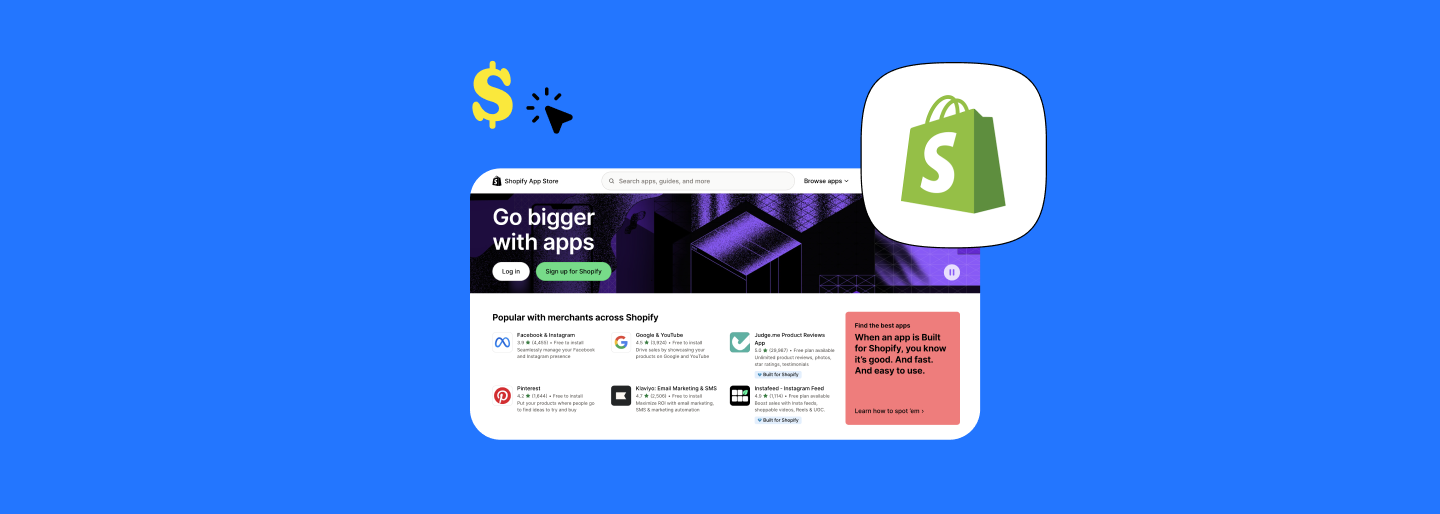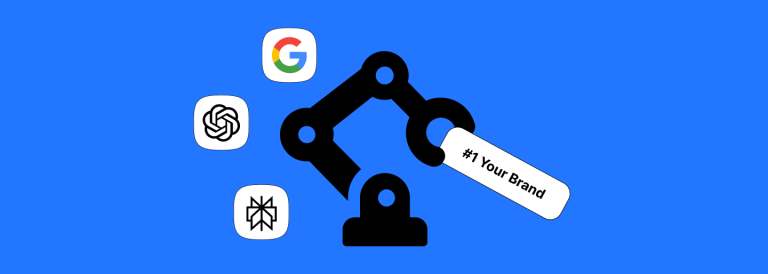The Real Cost of Shopify Ads: A Guide to Smarter Spending
Shopify ads are a key component of any Shopify app strategy. It can help your app get more visibility and increase your conversions. Bust as with any other paid advertising platform, optimizing costs is the most important thing if you don’t want to burn through your budget.
In this article you will find everything you need to know about Shopify cost optimization as well as some of the best tools to help you get the most out of your strategy.
Table of contents
Shopify Ad Limitations for Foreign Users: How to Pay for Shopify Ads with NachoNacho
For many international users, paying for Shopify Ads can be a challenge. Standard credit cards often face issues with foreign ad platforms, leading to declined transactions and campaign interruptions. This is why businesses use virtual card solutions such as NachoNacho.
NachoNacho NachoCards are a type of virtual credit card designed for business expenses. You can create a unique, single-purpose card for each ad platform you use. This provides a level of control and security that traditional payment methods can’t match.
Key Benefits of NachoCards for Shopify Ad Spend:
- Spend Limits: Set a maximum spend limit on each card. This is a powerful feature that prevents you from accidentally overspending or having an ad campaign run wild with an unchecked budget.
- Vendor Isolation: By creating a separate card for each ad platform (e.g., one for Shopify App Ads, one for Google Ads, etc.), you can see exactly how much you’re spending on each channel. This makes it simple to track and reconcile expenses.
- Enhanced Security: Using a NachoCard protects your main business credit line. If one virtual card is ever compromised, you can simply cancel it without affecting the rest of your business finances.
- Streamlined Management: All your NachoCards and their corresponding transactions are centralized in a single dashboard, giving you a clear, real-time overview of your entire ad spend. This makes financial reporting and management much easier.
- Access to Massive Discounts: Aside from offering virtual credit cards and expense management features, NachoNacho is also the largest SaaS discount marketplace, with huge discounts of top software tools. In our marketplace, you can find deals for products such as AWS, Microsoft 365,
Breaking Down the Costs of Shopify Ads
How Bidding and Cost-Per-Click Work
Shopify App Store ads use a first-price auction model. When you set a bid for a keyword or placement, your bid competes against others in the auction. If you win the auction, the price you pay for the click is your full bid amount. For example, if you bid $1.50 and win the auction, you pay $1.50 for that click, even if the next highest bid was only $1.00.
Shopify also factors in your app’s relevance to the search term. A highly relevant app with a lower bid can sometimes win an auction and pay less per click than a less relevant app with a higher bid. This system rewards apps that are a good match for what merchants are searching for.
Factors that Influence Your Ad Spend
Several key factors determine how much you’ll spend on Shopify App Store ads:
- Daily Budget: This is the maximum amount you’re willing to spend each day. Shopify’s system will stop showing your ads once this budget is reached. You can set this as low as $5 per day to start.
- Cost-Per-Click (CPC) Bid: This is the specific amount you are willing to pay for each click on your ad. Higher bids can increase the likelihood of your ad being shown in top positions, but they also increase your overall cost. You can adjust your bids at any time to optimize performance.
- Keyword Competition: The cost of a keyword is heavily influenced by how many other app developers are bidding on it. Highly competitive keywords in popular categories will have a higher CPC. Using long-tail, specific keywords can help lower your costs while still targeting a relevant audience.
- Ad Relevance: As mentioned, your app’s relevance to a search query plays a big role. A well-written app description, relevant features, and a high-quality listing can improve your ad’s relevance score, potentially leading to lower costs and a higher ad position.
- Targeting: The regions and devices you target can affect your costs. Targeting a broad audience might seem like a good idea, but it can lead to wasted spend on clicks that don’t convert. Focusing on specific regions or devices where your target audience is most active can improve your ad’s performance and efficiency.
Setting a Realistic Ad Budget for Your Shopify Store
A good starting point for a new campaign is a modest daily budget, like $5-$20, to test different keywords and ad creatives. Monitor key metrics to determine what’s working:
- Cost per Install (CPI): This measures how much you pay for each new app installation that comes from your ad campaign.
- Customer Acquisition Cost (CAC): This is the total cost to acquire a paying customer. For app developers, this is often the most important metric, as it directly ties your ad spend to revenue.
By regularly monitoring these metrics, you can adjust your bids and targeting to optimize your ad spend for the best possible return on investment (ROI). Remember, the goal isn’t just to get clicks, but to acquire high-quality merchants who will use and pay for your app.
Smarter PPC Strategies for Small to Mid-Sized Businesses
Strategies for PPC campaigns on Shopify and any other platform will depend on the size of your business. Smaller companies, need to be much more conscious about their budgets but without limiting growth.
We recently had a discussion with the CEO at Diginius, Nate Burke about the best strategies that SMBs use to maximize conversions with limited budgets.
For context, Diginius is a PPC platform for agencies to manage all their client analytics and analytics and campaigns. This gives them a clear overview of their strategies and insights on how to optimize. Check out Diginus with 25% off on the NachoNacho marketplace .
Check it out below to inform your strategy:
Ad Spend Optimization Strategies
Once you’ve launched your Shopify App Store ad campaign, the work isn’t over. To maximize your return on investment (ROI), you must constantly monitor and optimize your ad spend. Here’s how to get the most out of your advertising budget:
Refine Your Keywords and Bids
Regularly review the performance of your keywords. Pause or lower bids on keywords that are expensive but don’t result in installs or paying customers. Conversely, for high-performing keywords, consider increasing your bid to capture more of that valuable traffic. Use a mix of broad match and exact match keywords. Broad match helps you discover new, relevant search terms, while exact match allows you to focus on the highest-converting keywords and control your costs.
Leverage Negative Keywords
To prevent your ads from showing up for irrelevant searches, use negative keywords. For example, if your app is a “paid invoice generator,” you might add “free invoice generator” as a negative keyword to avoid paying for clicks from merchants who are only looking for a free solution. This is a powerful way to eliminate wasted ad spend.
Optimize Your App Listing
Your ad is just the first step. The goal is to get a user to click and then install your app. A well-optimized app listing is crucial for converting clicks into installs. Ensure your app’s title, subtitle, and description are clear, compelling, and use relevant keywords. High-quality screenshots and videos that showcase your app’s features and benefits can also significantly improve your conversion rate.
Alongside optimization, implementing Shopify consent management ensures any data collected through your app or store meets privacy regulations, helping maintain user trust.
A/B Test Your Ad Creatives
The ad you create—including the headline and icon—can have a huge impact on your click-through rate (CTR). Test different versions of your ad to see which one performs best. For example, you might test a headline that focuses on a problem your app solves against a headline that highlights a specific feature. A higher CTR often leads to a lower CPC, as the platform rewards ads that are more relevant and engaging to users.
Monitor Your Metrics Beyond Clicks
While CPC is important, what truly matters are your Cost Per Install (CPI) and Customer Acquisition Cost (CAC). Monitor these metrics closely to ensure your ad spend is leading to profitable customer acquisition. If a keyword is generating a lot of clicks but few installs, it may not be the right audience for your app. Don’t be afraid to adjust your strategy based on this data.
Taking Control of Your Ad Dollars
Navigating the costs of Shopify Ads requires more than just a marketing strategy—it demands a smart financial approach.
By understanding the direct and indirect costs, setting realistic budgets, and leveraging optimization techniques, you can ensure your ad campaigns are both effective and profitable.
Tools like NachoNacho provide the essential security, control, and visibility needed to manage your spending and scale your e-commerce business confidently.

Written by Andres Muñoz
If you would like to receive the latest deals added to NachoNacho, make sure you sign up for our newsletter below. We’re adding amazing software discounts you can’t miss!
Sign up for our newsletter






